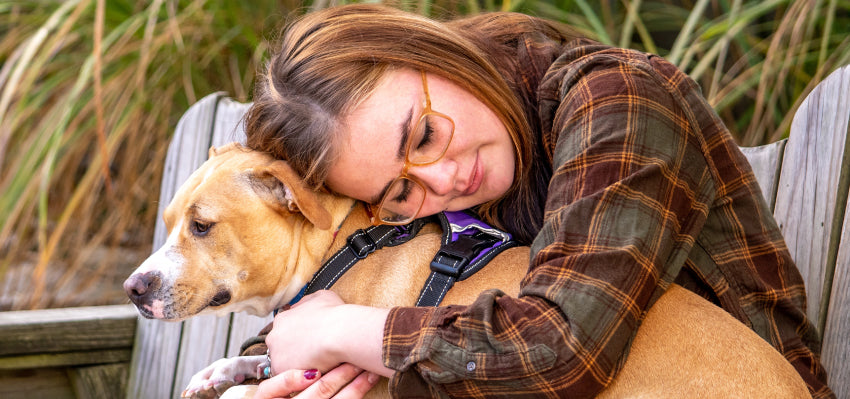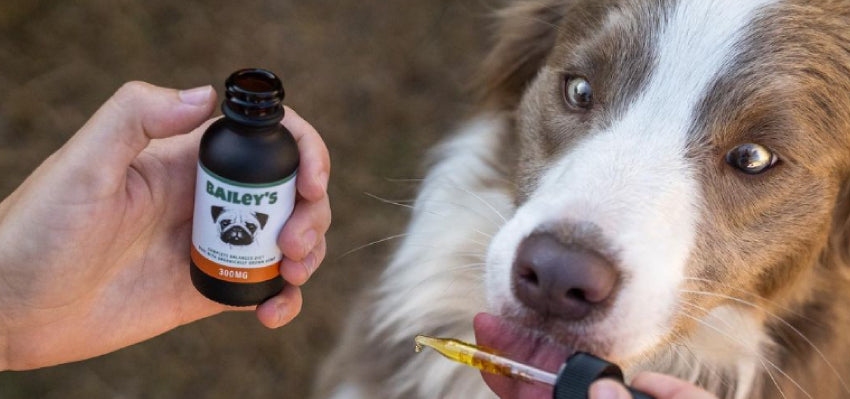Everything You Need to Know About Keppra for Dogs

According to one recent report, 20% to 40% of all dogs with epilepsy suffer from a particular form of the condition called refractory, or drug-resistant, epilepsy.
Epilepsy is considered to be refractory when at least two appropriate, anticonvulsant medications have failed to adequately control the seizures, despite being used in serum concentrations considered to be in the standard therapeutic range.
If your pup is dealing with refractory epilepsy, your veterinarian might have suggested Keppra for dogs. One of the brand names for the medication Levetiracetam, Keppra is a new antiepileptic drug used to help manage the symptoms of refractory epilepsy in dogs and cats.
Before you begin administering this medication, you might have a few important questions, such as: Is it safe? What are the side effects you can expect? Are there any alternatives?
Today, we're taking a closer look at this anti seizure drug for dogs and sharing everything you need to know.
Table of Contents
- 1. What Is Keppra for Dogs?
- 2. How Does It Work?
- 3. Benefits to Note
- 4. What Are the Side Effects?
- 5. What Is the Proper Keppra Dosage?
- 5.1 When Will It Take Effect?
- 5.2 How Often Should I Administer It?
- 5.3 What If I Miss a Dose?
- 5.4 Are There Any Risk Factors?
- 5.5 What Are the Possible Drug Interactions?
- 6. How Should I Store Keppra?
- 7. Are There Any Alternatives to Keppra?
- 7.1 CBD and Seizures
- 8. Is Keppra Right For Your Dog?

1. What Is Keppra for Dogs?
Keppra is a brand name for Levetiracetam. Other brand names for this medication include Elepsia and Spritam. While it was designed specifically for use in humans, many vets use it in an off-label capacity.
This means that they're using it in a form that isn't explicitly listed on the drug's label but is generally considered safe. In dogs, vets typically prescribe Keppra in combination with other anticonvulsant medications. In cats, it can be used in combination or alone.
In addition to Levetiracetam, other options for dog seizure medication include phenobarbital and potassium bromide. However, these medications aren't always enough to control seizures on their own. In some pets, they can even trigger the onset of uncomfortable side effects, such as:
- Loss of coordination
- Sedation
- Changes in behavior
When this is the case, pet parents might look for alternative medicines to help their pup feel better, and Keppra could be one of their choices. If your vet recommends administering Keppra in conjunction with phenobarbital or potassium bromide, you may be able to lower the dosage of the latter two medications and still alleviate your pet's symptoms.

2. How Does It Work?
Have you wondered, "Why is my dog having seizures?" It can be extremely upsetting to witness your four-legged pal suffering from this condition.
In both pets and humans, seizures happen when the brain's neurons are discharging quickly and continuously, working at a pace far more intense than normal. This creates an increased level of electrical activity, which can lead to convulsions.
While they can be difficult to watch, the good news is that seizures in dogs aren't usually life-threatening. The exception would be a seizure in older dogs, or in dogs that have another underlying health condition.
What is Keppra used for in dogs? In short, this medication helps prevent seizures by attaching to a protein called synaptic vesicle protein 2A. This protein helps release chemical messages from your pup's nerve cells, which calms and stabilizes electrical activity in their brain.

3. Benefits to Note
If you're considering giving your pet Levetiracetam for dogs, the primary benefit should be a reduction in the number of seizures that your pet experiences. However, there could also be other benefits to starting this treatment.
One of those is a reduction in canine pacing. Often, dogs are prone to pacing after recovering from a seizure. This period, known as the "post-ictal" period, can last up to 24 hours depending on the individual dog.
It can include a range of uncomfortable side effects, including:
- Confusion
- Disorientation
- Aimless pacing
- Increased thirst
- Increased urination
Some dogs may also experience a reduction in sight or even blindness during this period. While some anticonvulsant drugs, such as phenobarbital, can actually increase restlessness and pacing in dogs with seizures, experts believe Keppra is less likely to cause this reaction.
In fact, Keppra should reduce pacing in your pup, as well as help control other seizure-related symptoms. If you find that it aggravates or increases their pacing, speak to your veterinarian to make sure the medication is being administered correctly. There could be other underlying issues, such as pain or anxiety, that are also causing the pacing.
RELATED: Pain Management in Dogs - How CBD Can Give Relief

4. What Are the Side Effects?
If your vet has recommended Keppra as a potential dog seizures treatment, you naturally want to know the potential side effects that might occur. When you know what to expect, you can take the proper precautions to keep your pal safe and comfortable.
Most dogs seem to tolerate all forms of Levetiracetam, including Keppra, quite well. If side effects do occur, they are usually mild. Some of the ones to look out for include:
- Drowsiness
- Drooling
- Behavioral changes
- Loss of coordination
- Hyperactivity
- Aggression
- Gastrointestinal distress (vomiting or diarrhea)
While some dogs might seem calmer and less agitated on Keppra, others might have the opposite effect. You might notice that yours seems agitated and more aggressive.
While these are the only known side effects at this time, keep in mind that Keppra has only been used on a small number of pets to date. As this application becomes more common, other effects might become known. If you notice any side effects that seem severe or serious, such as persistent vomiting or sudden changes in behavior, reach out to your veterinarian immediately.

5. What Is the Proper Keppra Dosage?
It's always best to listen to your vet when measuring your exact Keppra for dogs dosage. However, it does help to know what's available and how to administer it.
This medication is commonly available in two different dosages, including:
- 500mg Levetiracetam tablets
- 750mg extended-release tablets
In addition, it can also be prepared as a liquid oral solution or given as an injection. Most vets measure Keppra dosage for dogs by weight to make sure your pup receives enough of the medication.
If your vet recommends a Keppra injection for your pup, this will usually take place in their clinic. If using the tablets or oral solution, you can give it with or without food.
Monitor your pup to see how they react after taking Keppra. If they vomit after taking it on an empty stomach, give all subsequent doses with food. Be sure to measure the liquid form carefully, and don't crush the extended-release tablets to avoid giving too much medication at once.
5.1 When Will It Take Effect?
You should notice the effects of Keppra in your pet within one to two hours. If you don't notice any changes, do not give any additional medication. Instead, reach out to your vet.
They can perform lab tests to evaluate how effectively the medication is working in your pup. Note that stopping this medication abruptly could trigger withdrawal seizures in your furry pal, so it's important to let your vet know if you're ready to taper them off of it.
5.2 How Often Should I Administer It?
While you might be familiar with giving your pup anticonvulsant medications once a day or even once every few days, Keppra typically works a little differently.
Often, vets will recommend that your pup take a standard tablet multiple times per day, up to three times daily. If you're giving them an extended-release tablet, you may be able to reduce that frequency to twice a day.
Why is this the case? Put simply, your pup's body breaks down this particular medication very quickly. In fact, the elimination half-life (the time it takes the plasma or blood level of the drug to fall by half) is around four to six hours.
While you might worry that administering Keppra so often may lead to an overdose, this isn't likely. The medication has a wide margin of safety. Still, your vet might want to monitor your pet's therapeutic blood levels via routine bloodwork.
If your pet has elevated levels of Keppra in their blood, they could exhibit negative side effects, such as:
- Increased agitation and restlessness
- Pacing
- Panting
RELATED: What To Do If Your Dog Won't Lay Down and Keeps Pacing
In addition, they may also become unsteady and experience difficulty walking. Their heart rate and blood pressure could also increase.
Fortunately, these effects are not common. Instead of being broken down by the liver, Keppra passes directly into your pup's urine. This makes it safe for most dogs to take, including those with impaired livers or liver damage.
However, researchers are still performing tests to investigate all of the adverse effects it might have, so it's always best to stick with your vet's guidelines.
5.3 What If I Miss a Dose?
If you miss a dose of Keppra, try to give it as soon as you remember it. However, keep your dosing schedule in mind. If it's almost time for your pup's next dose, skip the one you missed and give it at the scheduled time.
IMPORTANT: You should never give your pet two doses of Keppra at once, or more than their recommended dose.
5.4 Are There Any Risk Factors?
Your veterinarian should not prescribe Keppra for your pup if they're allergic to any of the ingredients in the medication. It's also smart to use this drug cautiously if your pet suffers from liver or kidney disease, as they could be extra sensitive to it, and to avoid giving it to dogs who are pregnant or nursing.
5.5 What Are the Possible Drug Interactions?
Before administering Keppra, speak to your veterinarian if your pup is currently taking any of the following medications:
- Central nervous system depressants
- Carbamazepine (used to treat seizures, pain, and behavioral issues)
- Methotrexate (prescribed for immune diseases)
- Nonsteroidal anti-inflammatory drugs (NSAIDs)
- Phenobarbital (used to treat seizures)
In addition, remember to tell your vet about any herbal supplements or vitamins that your pup may be taking!

6. How Should I Store Keppra?
You can store Keppra tablets and the liquid oral solution at room temperature. They do not need to be refrigerated.

7. Are There Any Alternatives to Keppra?
As mentioned, there are a number of different medications designed to help dogs who suffer from seizures. This includes human medications, such as Keppra, that are used off-label for pets. If you believe that Keppra for dogs might be ideal for your pup, we encourage you to reach out to your veterinarian to learn more about it.
As you continue to explore and research your options, we also want to point you toward some natural options that might suit your pal, including CBD for dogs.
7.1 CBD and Seizures
Did you know that the U.S. Food and Drug Administration (FDA) has approved CBD as an anti-seizure medication for children? Prescribed under the name Epidiolex, it received FDA approval in June of 2018.
While this medication is reserved for human use, it does indicate that there could be potential for CBD to be used as a more widespread form of seizure treatment. It may even help our pets who suffer from seizures.
If you're interested in trying our CBD products for pets, we suggest starting with our Full-Spectrum CBD Oil. Formulated to support your pup's overall wellness and gently induce a sense of calm, it may help control the side effects of your pet's seizures, including the agitation and pacing that can accompany the post-ictal period.
As you evaluate forms of CBD online, remember to only purchase your products from a trusted, reliable source, like Bailey's. Our CVO is Dr. Robert J. Silver, DVM, who has been studying the effects of phytocannabinoids on cats, dogs, and horses for more than 30 years. You can read all about the rest of our team here!
Our company has been around for more than seven years and we're highly reputed by even the most discerning pet owners. With more than 1,300 reviews online, it's easy to see why we've become the go-to source for CBD oil, topicals, and treats for pets!

8. Is Keppra Right For Your Dog?
As responsible and loving pet parents, we don't want to ever see our fur-babies in pain. That's why it can be so hard to watch your furry pal suffer from seizures, as well as all of the side effects, including pacing.
If your vet has recommended Keppra for dogs to help control your pup's symptoms, it's important to learn as much about this medication as possible. In addition, you may want to explore other options, such as our CBD oil, to help soothe their discomfort.
If you're interested in learning more about our products and how they work, feel free to check out our full collection of CBD for dogs!
13 Comments
These products have not been evaluated by the FDA and are not intended to diagnose, treat, cure, or prevent any disease.












My grand puppy 7 yrs old is on Keppra 500mg three times daily based on wt. For 6 months no seizures, then 1-2. Then none, then a couple then none.
Having seizures through the keppra. Yesterday 1 seizure within 1/2 hr after each of 3 doses of Keppra. The seizures are less than a min each. His postictle period less than 1 hr. Yesterday 1/2 hr.
Wondering about trying the CBD oil
Hello, I’ve been using Keppra for my dog seizures and using CBD oil everything was going well but now my dog has started having seizures again I give her the medication and the CBD oil every eight hours. I was wondering if I can give her a bigger dose of CBD she’s on a full spectrum 500 MLCBD oil I give her 0.25ml Every eight hours for the past two days she has had two seizures towards the early morning around 6 o’clock in the morning and I give her her meds and her oil at 7 o’clock in the morning. She weighs 10 pounds. Can you please get back to me thank you.
Hi! Debating on starting my dog on keppra xr. He has had four seizures. Just turned 2 french bulldog. He is on a raw food diet, mct oil, salmon oil & cbd. I started him on this diet after his first seizure. Grand mal seizures. His first two were the longest & worst but second two not as bad. About 15 days apart every time. Usually he is sleeping. Is it worth putting on keppra or keep trying the natural route a little longer.
My 14 month old English Bulldog (F) had a seizure (approximately 8 min, seemed to be non-responsive head shaking in that time period), so we took her into the vet, where she stayed a few days (and even had a few more minor seizure events while at the vet). Great vet clinic, so this question is not intended to suggest anything otherwise. They ran a panel of tests over a few days while she was at the vet – and ruled out all other causes, and diagnosed her with epilepsy, and prescribed Keppra, and she seems to be doing fine on it. But what if she doesn’t have epilepsy? What if it’s something else called Idiopathic Head Tremor Syndrome? How can we tell the difference? And if my dog does not actually have epilepsy, is taking Keppra bad for her?
My Australian Cattle Dog is on Keppra for seizures.
I sometimes give her CBD to calm her down.
Is it ok to use both?